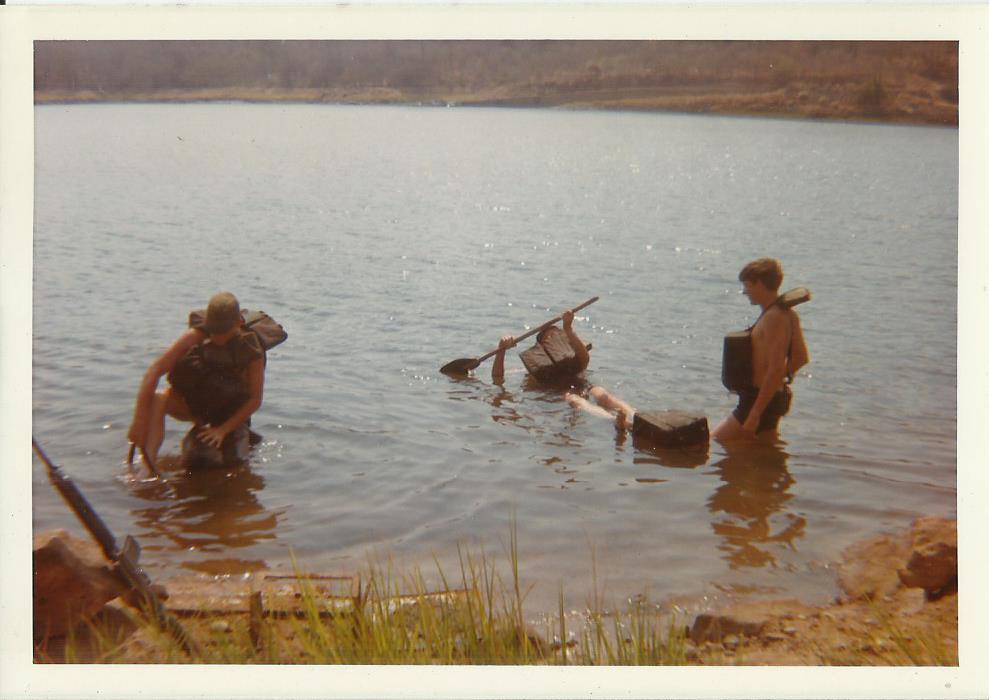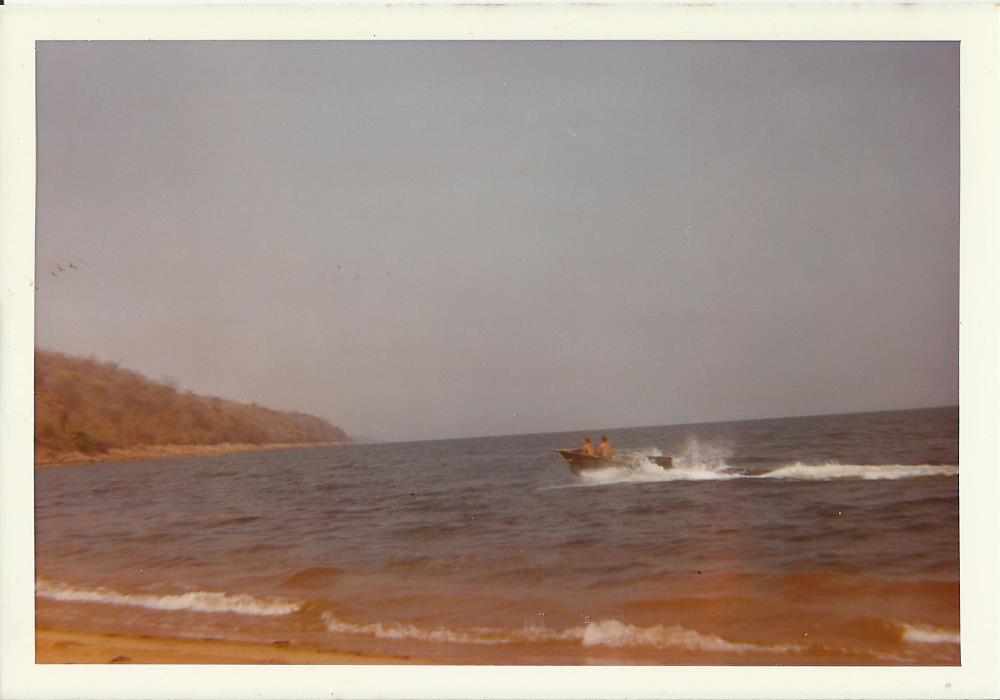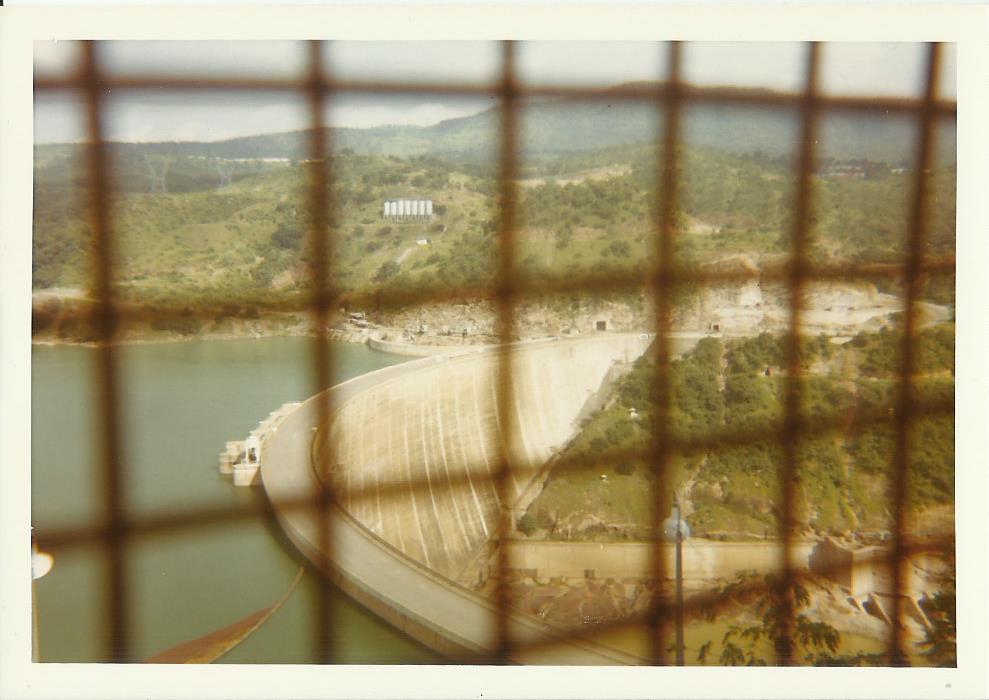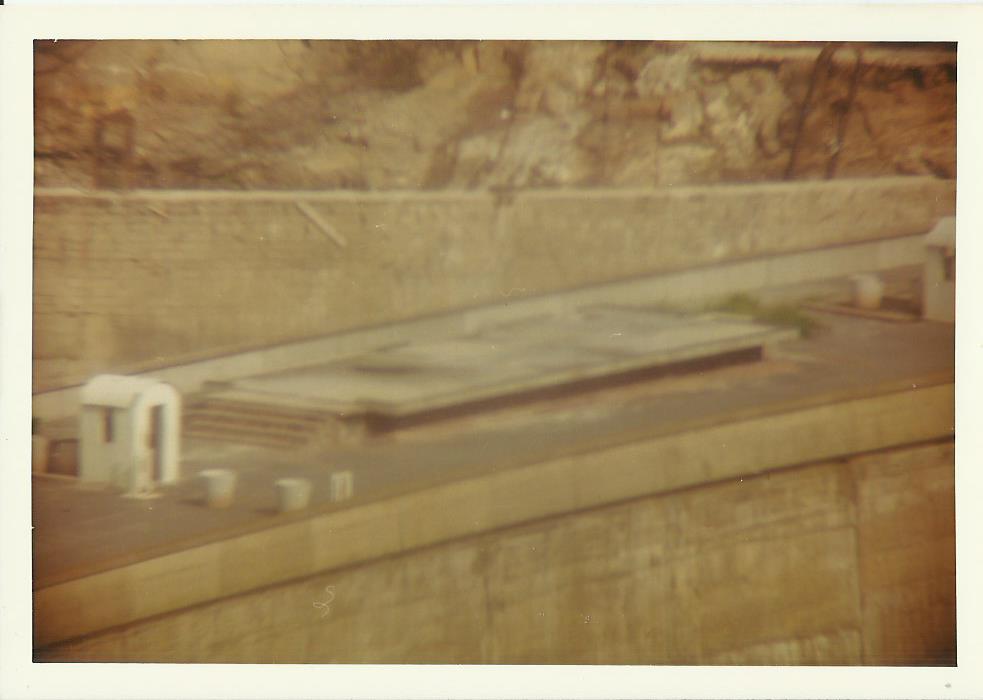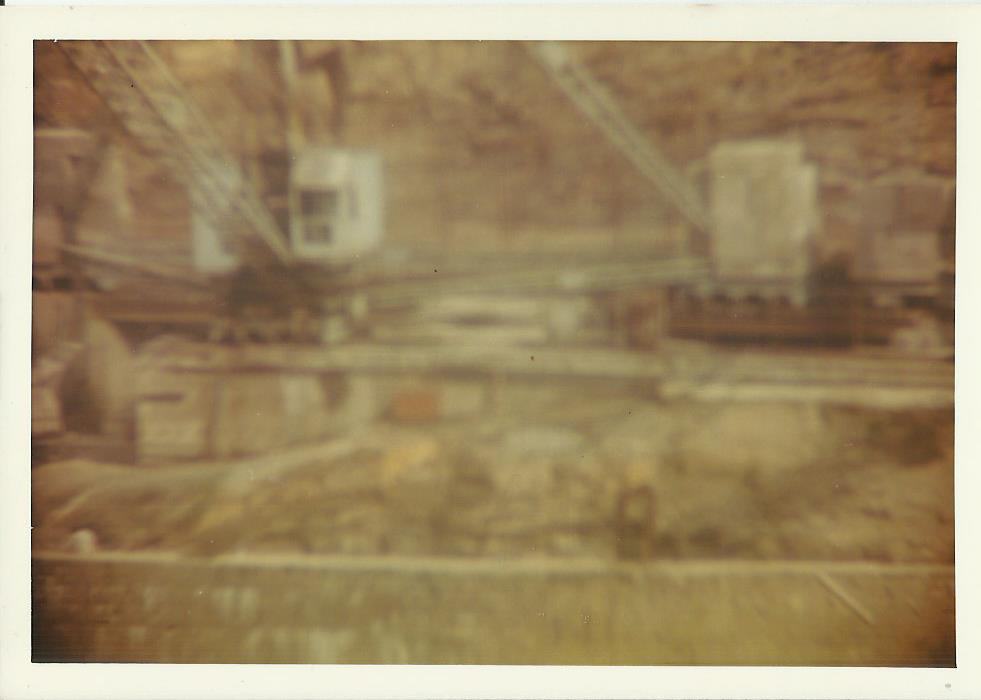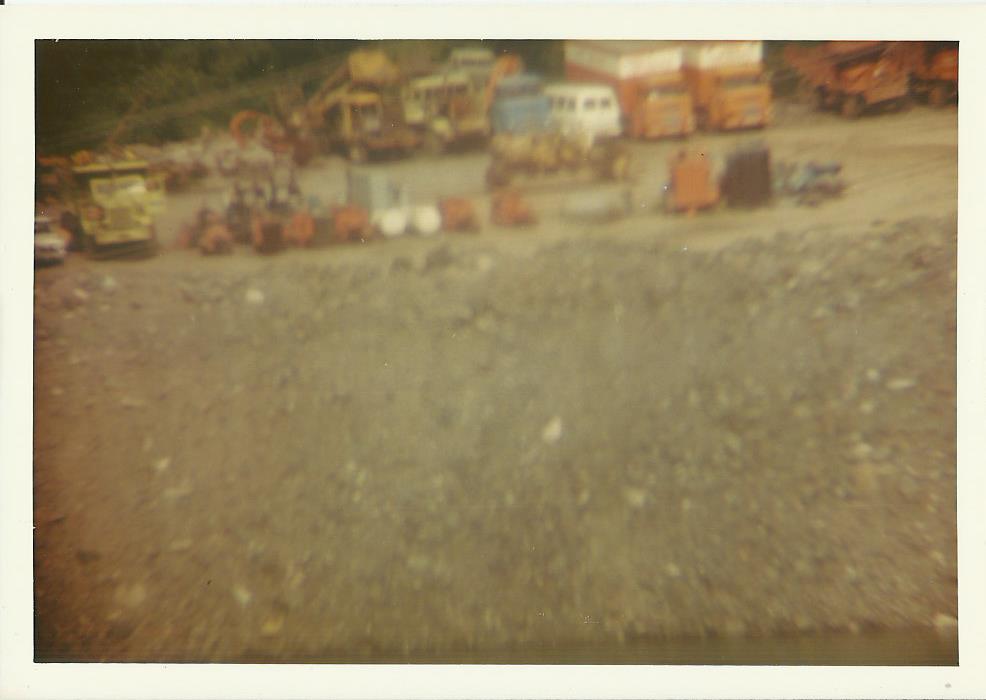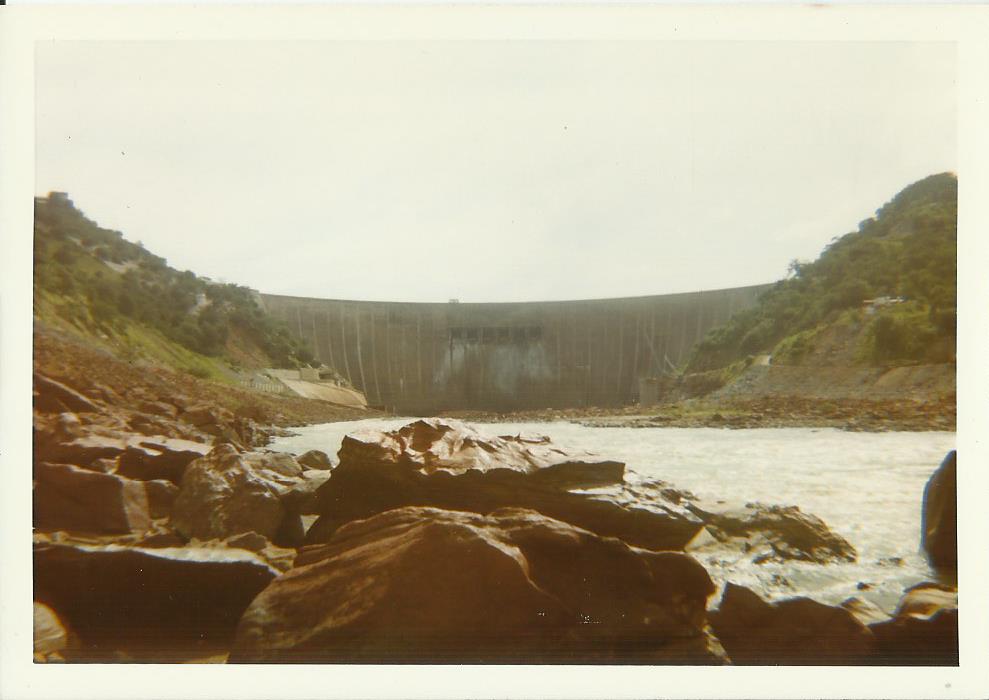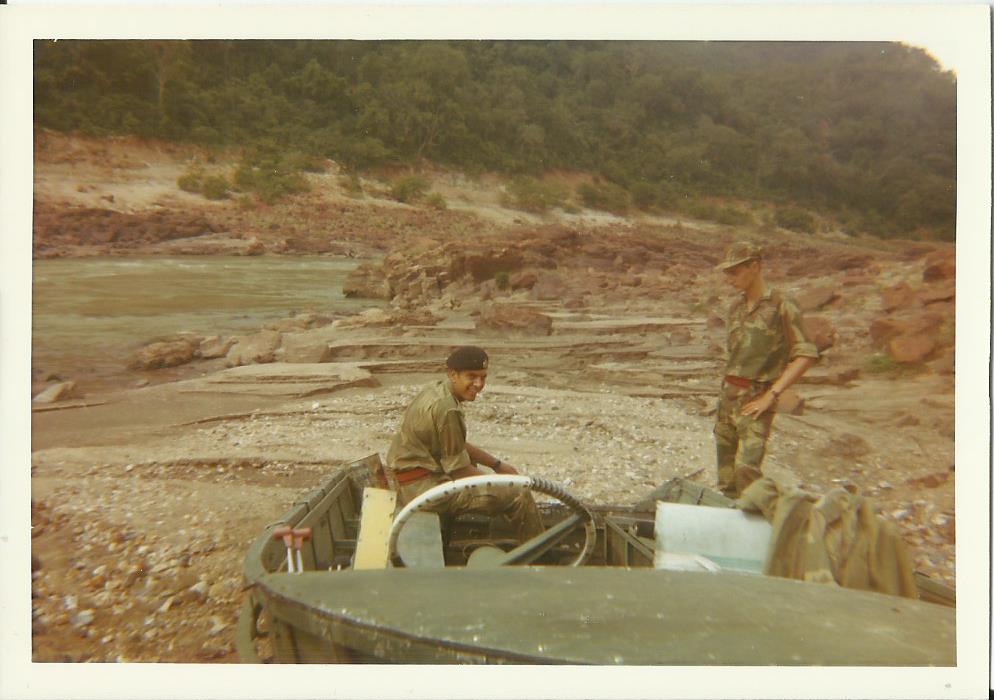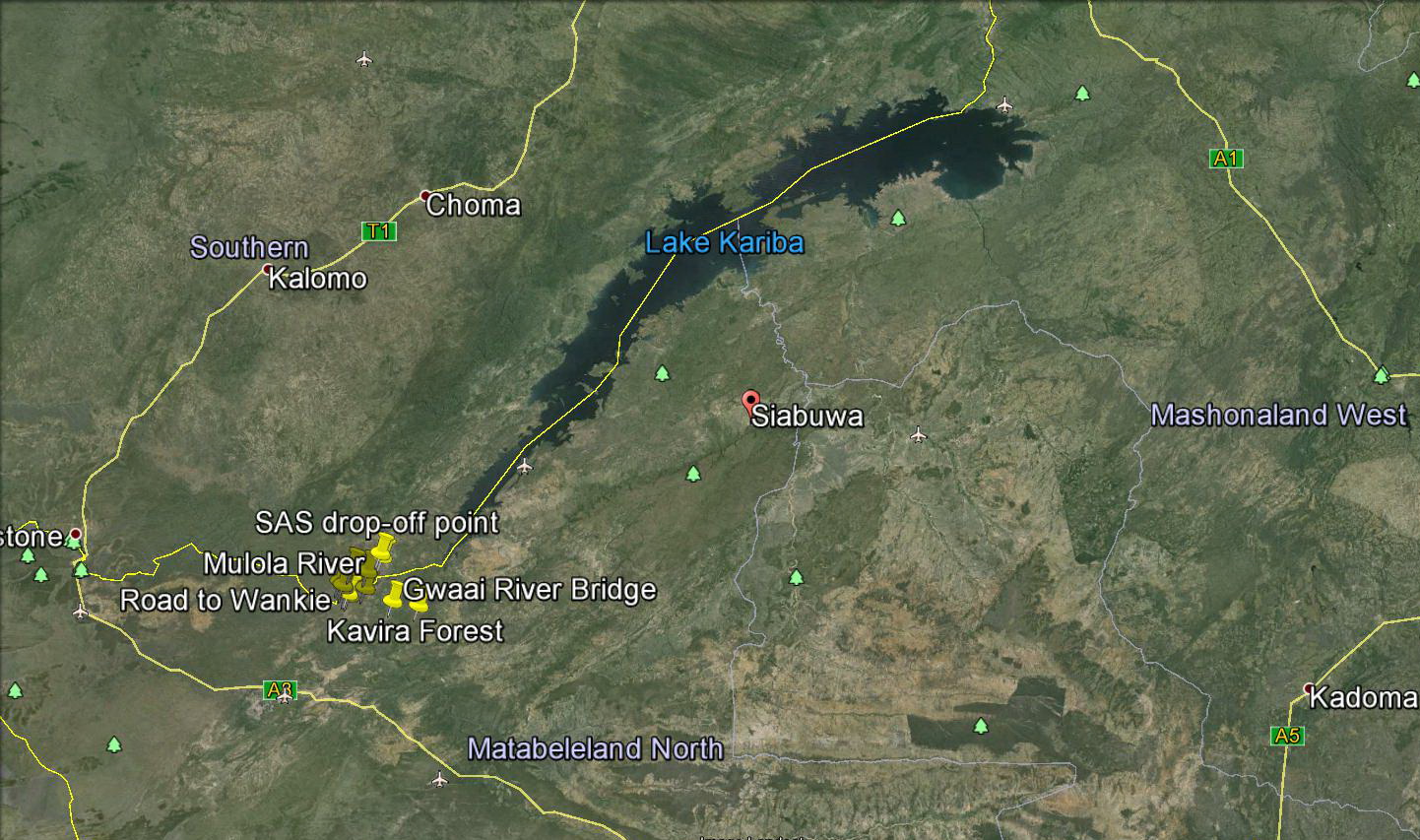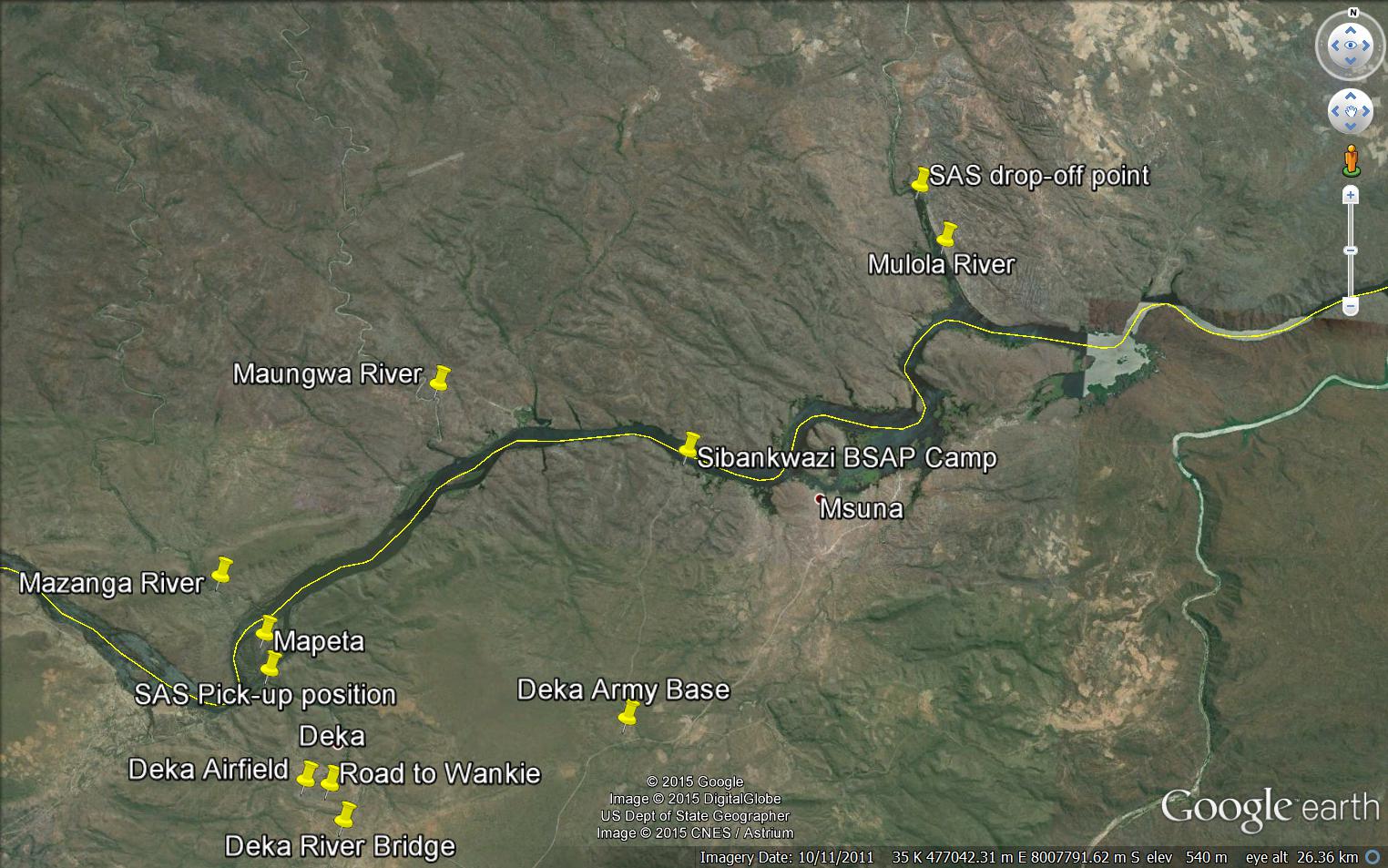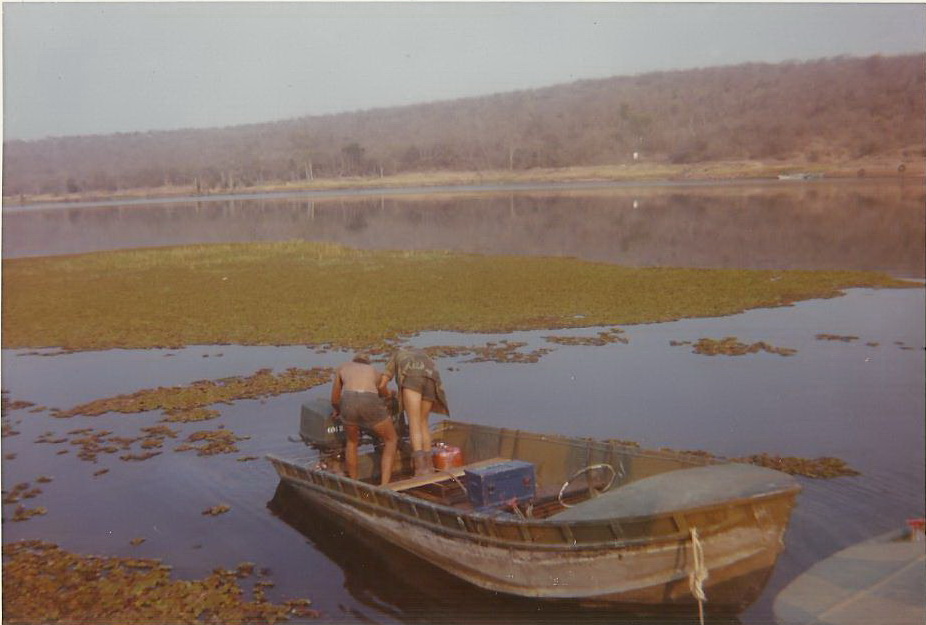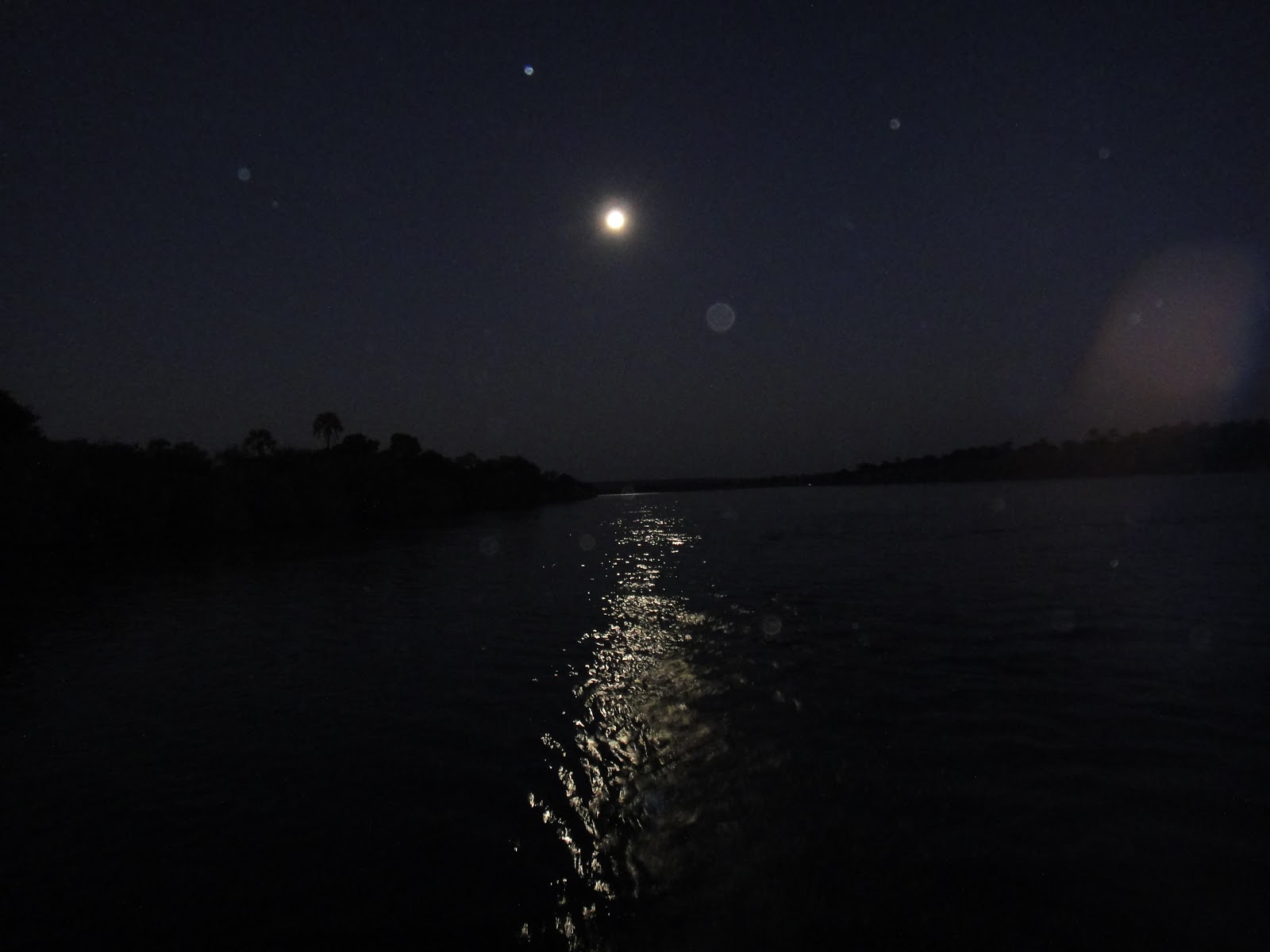On The Boats And Sundry Combat Engineer Duty: A Personal Account Of Rhodesian Sapper Life
May 2, 2015
Another great contribution by Basil Preston to my blog. Many thanks Basil.
Reading through this account, those of you that have been in the bush and taken part on ops will really get the feeling of having had similar experiences. I also worked with Don Price while at 1 Indep in Wankie and always found him to be a professional soldier although he did call me a “dude” one day while we doing stopper group ops for fire-force. Good times and I can really relate to Basils input which follows:
Boats at Binga and Sundry Combat Engineer’s duty 1978/79 (thereabouts)
We were doing a camp with 2RR?, at Binga and Major Don Price was the officer-in-charge. The Engineers were Stan Brazer, Graham Malone and myself and we were operating the boat in between doing mine-road clearance etc. We were to have a Pookie with us, but unfortunately it had been damaged in a mine blast before we arrived.
Major Don Price is well-known for his bush savvy and his company had many kills to their credit. But it was not always in their favour. Major Price was very strict; in that he would not allow any of his guys to catch a lift when their stint on patrol in the bush was complete. However, a stick of four guys had just completed their patrol and had stopped over at the police camp at Siabuwa, to wait for their pick up. (Siabuwa, is a small relatively unknown area and one would only know about it if one travelled to Karoi from Binga through the bush, along the southern edges of Kariba driving a 4×4. Nnear Binga, Matabeleland North, its geographical coordinates are 17° 28′ 0″ South, 28° 3′ 0″ East ). And the police camp was on top of a gomo.
(Inserted by Mark Craig: Below is a map showing Siyabuwa…….those following the blog will see how close it is to my area of boat operations).
Instead of the stick waiting for their pick-up at the pre-arranged position, they hitched a ride with the police in a landrover. However, the terrs had laid a mine in the tracks. And just before the police track entered the main dirt road, they hit the mine. Richard (?) Kashula and one/two other/s sitting in the back of the landy, where there is no mine protection were killed. John Sholts lost a leg. The one chap sitting in front of the landy plus the cop had minor injuries. The other guy was badly burnt from a white phosphorous grenade which had gone off in his back-pack at the time of the explosion. Kashula was an up and coming Rhodesian cricketer. My recollection of this is a bit hazy as far as the names go. But it was a sad day indeed for all of us.
We were all given a lambasting as to why the Major had rules and now we could all see what happens when ignored. We all felt shit….But then we all celebrated with the Major the good things they had done.
But life goes on. An Air Force chap, who was based at Binga at the same time had his private boat moored at the back harbour. Stan convinced him to take us fishing, which he gladly did. We tied the boat to a tree overhanging the water’s edge. This was at the mouth/entrance from the lake to the back harbour, as this guy said you catch “monsters” here. All we had to do was let the line out for a while, straight down; no casting, and then jiggle the line up and down. Stan had a strike which broke the rod where the reel is connected, but after recovering the line, all the tackle was gone. We all became very excited now, hoping to catch a “monster”.
But this was not to be. We had all been told to be on the look out for a Romanian chap, who supposedly ferried terrs across Kariba, and also that he had a 20mm cannon on his boat. Also, the odd police boat had been hijacked from its moorings and taken to the Zambian side from the front harbour. Hence why we now used the back harbour. {This was about the time the Janet was being used as the mother ship, with two strike boats operating from her. She had radar etc and were hoping to catch up with the Romanian. An Engineer, surname Tailor did his whole camp with one contact lens as the other had been blown out by the wind during a boat patrol.}
All of a sudden, bullets were zapping over our heads. We all shat ourselves, as we thought that the Romanian had seen us and was giving us a go. But the bullets stopped; then resumed again, and again. But the bullets were cracking rather high above us. Then we saw what was going on. The cops had floated a 44 gallon drum, and were doing “drive-by” firing practice at the drum, and the bullets were ricocheted off the water and ending up above us. We departed in a hurry and returned to the back harbour and safety (by road to the back harbour from Binga is about 15ks, and from the front harbour to the back harbour by boat, was about 30ks.)
We became rather friendly with the Air Force chap, based at Binga at the time, who loaned us his boat whenever we wanted a bit of R and R. But this soon came to a stop. We were going out on another R and R trip. And on arriving at the back harbour, we could not see the boat. But on closer inspection, we noticed the tie-up rope, and it was taught. We went closer and saw that it was still attached to the boat. It had sunk by itself. We were lost for any logical reason. Perhaps one of the cop’s bullets had done it an injury, but we will never know.
On another short patrol, this time in our Hercules, Graham Malone and I explored a part of the back harbour, which was off the beaten track so to speak (the army has given us plenty of opportunities of seeing “virgin” Rhodesia, which under normal circumstances one would never ever travel to and fishing sprees where no one has fished in years due to the terr activities. So this may sound like bullshit, but it is not). We were told that the tiger fish in the back harbour were a sub-species of the lake tiger; and were a smaller version and had a more snub head which was blueish in colour. But were just as sporty as the river tiger [the lake tiger is shorter and its girth bigger; is sluggish and basically only jumps once to rid itself of the hook.] (the record for a tiger in the lake is 42 lbs caught in a net, this is old information….1972…. and the river tiger is longer and more streamlined as it has to swim against currents etc and gives a better fight). We were able to confirm this sub species as we caught a few.
However, on a more humorous note, we were speeding along, and as we were rounding a bend, we surprised a hippo, which normally are not on land during day time, but this area was human-free and I doubt whether the hippo had ever seen a boat before. Not only did we surprise this huge animal, it put the shits up us, as we had not seen it. But all of a sudden, we heard this thrashing sound of something hitting water at speed. When we saw it, it was a mass of moving, terrified animal pushing water either side of itself, similar to when a Kariba sluice gate is open full. And it was heading directly towards us, well that’s what we thought. It was charging along the shortest route to get back into the water and safety. We were out of there in no time. It is just a pity that we did not have a camera with us. But I doubt whether any of us could have taken a picture, as things were happening at a terrific speed.
One night Don Price sent us on a night ambush. We were to ambush the bottle store (Tolotsho Bottle Store, I think, as intel from BSAP Special Branch had heard that the terrs were going to have a beer drink) about 30ks from Binga, back on the main road towards Kamativi. It was full moon and we were being driven by Louis Ribero. A whizz at de-governing the TCVs. As usual, the old Bedfords always back-fired, but Louis could make this happen as if it was a natural noise of the truck; so just after passing where we were to have the ambush, he induced the Bedford to back-fire, and slowed down so that we could hop off without killing ourselves, and once we were all off, the vehicle suddenly recovered and he continued for a couple of k’s so that the terrs would not know that we had hopped off. Then he turned and set off back to Binga and a cold chibulie.
About 15 minutes after being dropped off, we heard this tremendous explosion. Things always sound much louder at night. We all knew that Louis had hit a mine. The terrs (obviously on their way to the beer drink) had put one down just after we had passed them. They could have ambushed us. Anyway, we were then told to hump it back and ambush the truck. Also, a Provost was being sent from Wankie to drop a flare in order for us to have a look-see around the truck etc.
But, the timing was out. Ribero had been going so fast that the Major had incorrectly estimated the time it would take us to get into position and be able to use the light from the flare. Louis had told the Major that the old Bedford could not speed. Anyway, the plane flew over head, dropped his flare and we were still miles away.
Our adrenaline was pumping and as one knows, induces plenty of pissing time, and I just stepped off the main road onto the verge; we did not stop, so when I rejoined the line, a Rifleman nearly took me out as he had not seen me step aside. I learnt another lesson that night. Make sure everyone knows where every one is at all times.
Anyway, we eventually arrived at the RL, we could see enough to confirm that Louis was speeding; fortunately for him, it was on a straight and it was a right-back wheel detonation and no injuries, other than Louis’s pride. His truck was airborne for about 50 metres before the back axle touched down again. Another RL from the camp had already fetched Louis and his escorts before we arrived back at the injured old RL (the terrs had learnt too that when an RL back-fires that we were setting up something and the vehicle had to return, they were not all stupid as one thought and used this opportunity to plant a surprise, this was done on many occasions to other chaps).
We could not see all that good, but good enough to choose a spot for our ambush and then crept into our fart-sacks and did guard, by touching the guy next to you when your stint was over. However, my fear of Kariba spiders was with me again. After I crept into my sleeping bag, and just above my head, I saw this huge spider. The type that eats innocent Sappers. I did not move much for fear that this spider would make me his nightly snack.
I did eventually fall asleep, and when my eyes opened, the first thing I did was to see where the spider was (it’s funny how the mind works; bushes start moving, all shapes become the enemy, etc.). Well, I had been stressed for nothing, as the huge spider was in fact the head of a grass seed, the size of a semi-closed hand. I was thankful that I had not shared this with anyone that night, as I would not have heard the end of it. But perhaps they also had their own spiders to contend with.
And Louis Ribero continued to drive like Speedy Gonsalas. And survived, I hope, as he was a pleasant character.
Sapper B.R.Preston (RhE); 72860
Please also have a look at my website dedicated to Rhodesian and South African Military Engineers. Please join us on the forums by using the following link:
http://www.sasappers.net/forum/index.php
Copyright
© Mark Richard Craig and Fatfox9’s Blog, 2009-2015. Unauthorised use and/or duplication of this material without express and written permission from this blog’s author and/or owner is strictly prohibited.
On The Boats……Up The Creek With The SAS (Part 4: Also known as Eight Men In A Leaky Boat)
March 28, 2015
ZAMBEZI RIVER DOWNRIVER FROM MAPETA ISLAND: EN-ROUTE TO THE SAS DROP-OFF POINT
The boat was heavy and she laboured through the water and it felt as if invisible claws were trying to hold her back…..not wanting to let us go. An omen perhaps?
Tony was doing the best he could but try as he might he could not get us up on the plane even though we had moved as much kit to the back of the boat as possible to lift the bows. This in turn caused the stern to dip dangerously low towards the waterline and it was a little unsettling to say the least. Port and starboard trim was good though and we remained straight and level, not tilted to one side. We settled on a half-throttle pace, and taking our direction from the SAS Operator on the front bench the twin Evinrudes burbled us slowly back down the river.
We travelled within Rhodesian territory for quite some time, and for youngsters that had no previous experience of this type of operation this took away some of the tension of what may be ahead of us. It was somehow reassuring to know Rhodesia, our safe haven, was not too far away if the shit hit the fan. The SAS Operators were as always the ultimate professionals and I was proud to be working with them. They instilled a sense of security. You knew instinctively that if things turned nasty they would know exactly what to do. They were good men.
We had passed the Maungwa River mouth to the north, and then our second home the British South Africa Police (BSAP) camp at Sibankwazi. Msuna Mouth glided by in the darkness to our right and I craved for the ice-cold beers and battered barbel snacks I had consumed there on many a visit to the friendly owners of the fishing resort. It was easy to let ones mind roam and that was dangerous. We meandered on down the river, passing two large islands……both pitch-black and foreboding.
I was jerked back to the present, my mind having begun to wander off. Tony had swung us hard a-port and I lost my balance slightly while at the same time keeping a beady eye on the bow wave. The SAS man at the front had given a silent direction change to Tony. In a few minutes we would be crossing the invisible line that marked the international border between Rhodesia and Zambia. It was an eerie feeling, crossing into another country without permission, no passports, no questions. I began to warm to the idea of doing something I had never done before, and indeed I had crossed that point where fear no longer exists. You were committed to the mission, personal weakness or doubts could no longer be a consideration and there was no turning back. On every high-risk mission I have taken part in there was always a short period when I was afraid, sometimes very afraid. With me this is usually at the start and moving into the advance-to contact-phase, but once time crosses that indefinable moment that I cannot explain, a wonderful warm feeling washes over me….a feeling of being in control of my own emotions and destiny. The dye had been cast and there was no return.
It was that time for me now……approaching enemy shores on a dark and lonely river.
(Reservoir by StrongSteve)
The atmosphere on the boat had changed in a very subtle way. No one said anything but you could feel it. The SAS men began to check small details on their kit. Weapons were moved into more convenient positions, the smell of gun-oil permeating the air, masculine and comforting. Webbing was tightened over shoulders, shifting the weight of equipment onto the hips. Legs were stretched in the cramped confines of the boat.
A small red light came on as one of the Operators checked a plastic covered map with a small torch…….looking up at me he nodded his head, managing a white-toothed smile that shone through the darkness of the night and his camouflage cream. We were now well into Zambian waters and heading towards the Mulola River, one of the biggest rivers that emptied from that country into the Zambezi. We could see its gaping mouth ahead of us……a huge dark maw of emptiness seemingly waiting to swallow its victim. As we exited the Zambezi and entered the Mulola it became claustrophobic…….or so it seemed to me. After having vast expanses of water between the boat and land previously, we were now being enclosed by the high, almost invisible banks of the Mulola. The feeling of vulnerability returned to me, this would be the perfect place for an ambush and a mans imagination can run amok. This is good in some ways as it keeps you switched on. We were trained to always look for cover to move to if attacked. On land this is great idea but in the middle of a river it means absolutely bugger all. if the gooks were waiting for us we were well and truly fucked. Even if we made it to one of the banks, climbing to safe ground would be a challenge in the thick, rich vegetation. I unconsciously thought of gunfire and green tracers arching through the night sky……..willing them to stay away.
I cannot be sure how far we went up the river but probably about 2 kilometers as far as I can remember. Tony had the engines throttled right back now and we were just making enough way for the con to respond. At this speed the engines were almost silent but in the still dark night sounded to me like a pair of screaming banshees. it seemed to me that any gook within 100 clicks would hear us.
The map above shows our general route from the pick-up point to the drop-off point. Places of note along the way are also shown. The Mulola was, to the best of my recollection dry in some areas at that time and we navigated up river via quite narrow channels.
The boat rocked as the SAS Operator at the front stood up. He was studying the bank on the western side of the river. Understandably there had been no pre-recce of a drop-off point for security reasons and getting these lads off safely was now our top priority. It was past midnight and we also needed to get back before first light. We kept moving further into Zambia. The SAS navigator indicated to Tony that we should get closer to the bank and stop. He took out his map, again a little red torch was used, the only sound the two idling engines. The navigator moved us forward again…….one, two, three minutes passed and then just before the river took a sharp turn to the left he had Tony pull us into a wide hippo-track that led up the river bank. We had arrived at the drop-off point.
These men were well-trained. There was no need for chatter or briefings. That was all done before we left Rhodesia. And they were so silent….no clanking or scraping of metal. Preparation was perfect in all respects. Everyone knew what he had to do and what kit he needed to carry. They disembarked fast and before we knew it all except one had disappeared up the hippo-track to the top of the river bank. The boat seemed to breathe a huge sigh as the weight was lifted from her trusty old frame and she rose proudly up and out of the water, rocking gently to and fro. The Operator that remained with us spoke in low tones. He thanked us on behalf of the others and added that the plan had changed. We no longer needed to go back to the old farm at Mapeta, nor would we need to pick them up. We were to go straight back to Sibankwazi.
And then he was gone…….a grey ghost vanishing into the night. I was a little sad really and I would miss those guys.
There was a lot of water in the boat, all pooled at the stern under my booted feet. This was not as bad as it seemed and it would drain through a manually operated ball-cock on the way back when we got up on the plane. It was time for Tony and I to change over. The first thing to be done was to connect the reserve fuel tanks without killing the motors. We wanted to keep them running to avoid any type of technical failure on a restart. This was not too much of a challenge and we managed to bring the new fuel on-line without incident.
Tony took his place at the stern and I got behind the wheel…………it was time for the lonely journey back. Thats when my imagination started working overtime again. What if the evil gooks had planned it this way? Let us in and then shoot the shit out of us on the way out? it seemed plausible to me and something I might try if I were in their position. Just one of those things though and we needed to get moving.
Both engines were gurgling sweetly on idle and Tony gave me a thumbs-up to start moving astern. I took a sip of Coke from a can I had opened and shifted both engines into reverse……..and heard the sickening crack of a propeller shear-pin snapping. I had somehow manged to break the golden rule…….too many revs when changing gear normally equals shear-pin failure. I had just screwed-up fifty percent of our motive power and possibly placed us in harm’s way.
We were now two clicks up a Zambian Creek in a leaky boat with a dead engine………and the possibility we were being watched by bad guys was very real.
This mission was far from over………….
Please also have a look at my website dedicated to Rhodesian and South African Military Engineers. Please join us on the forums by using the following link:
http://www.sasappers.net/forum/index.php
Copyright
© Mark Richard Craig and Fatfox9’s Blog, 2009-2015. Unauthorised use and/or duplication of this material without express and written permission from this blog’s author and/or owner is strictly prohibited.






